
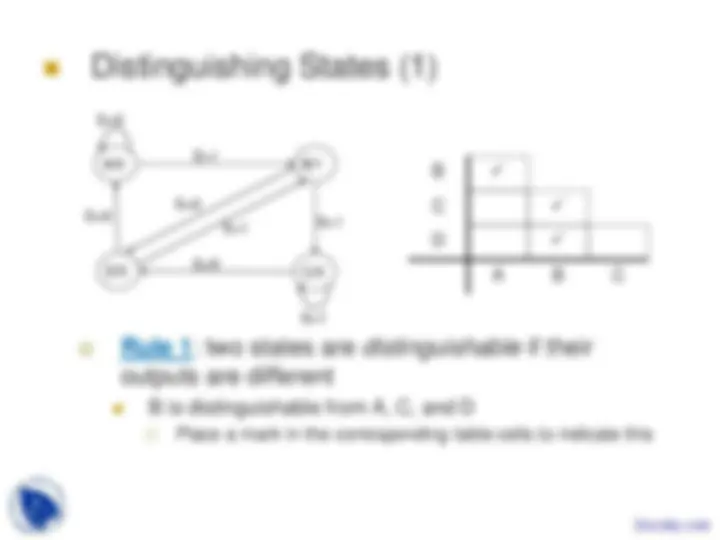
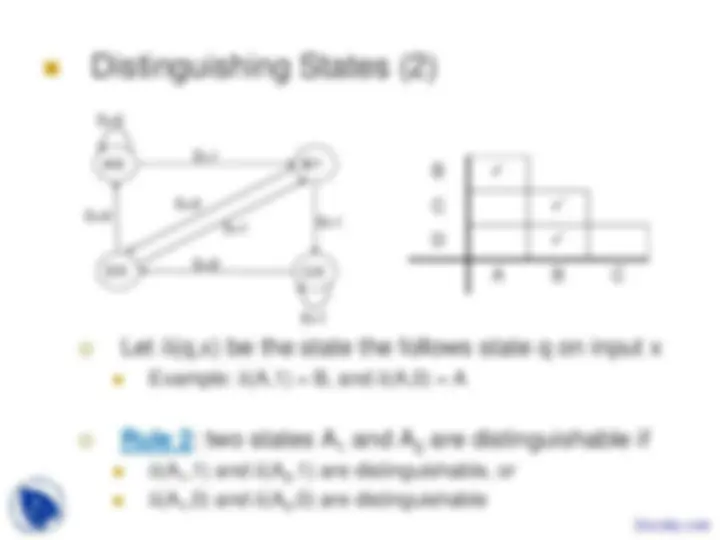
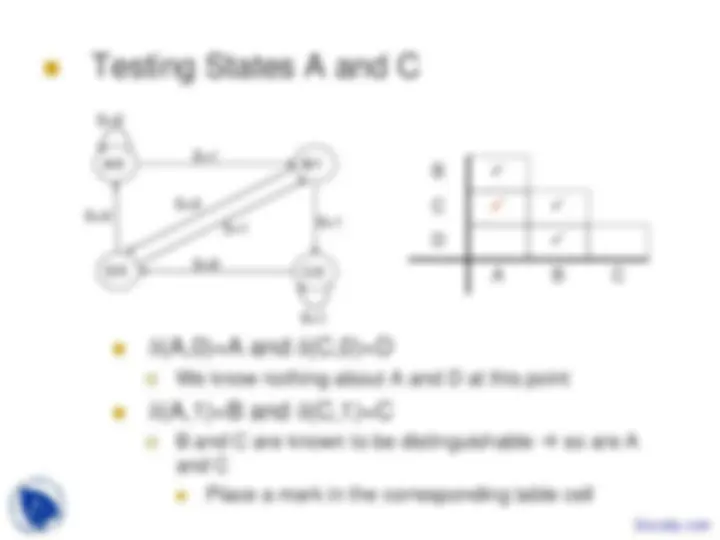
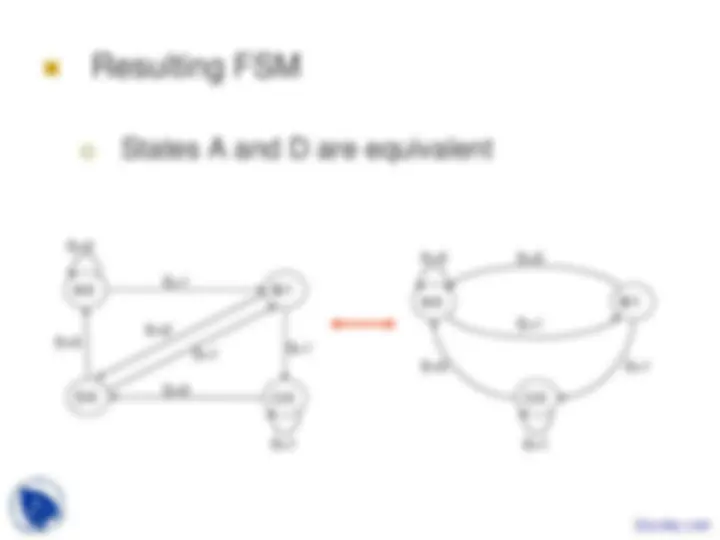

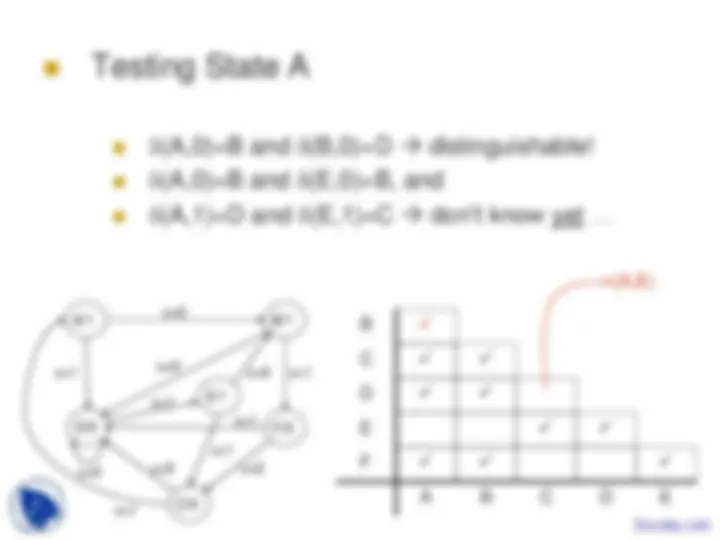
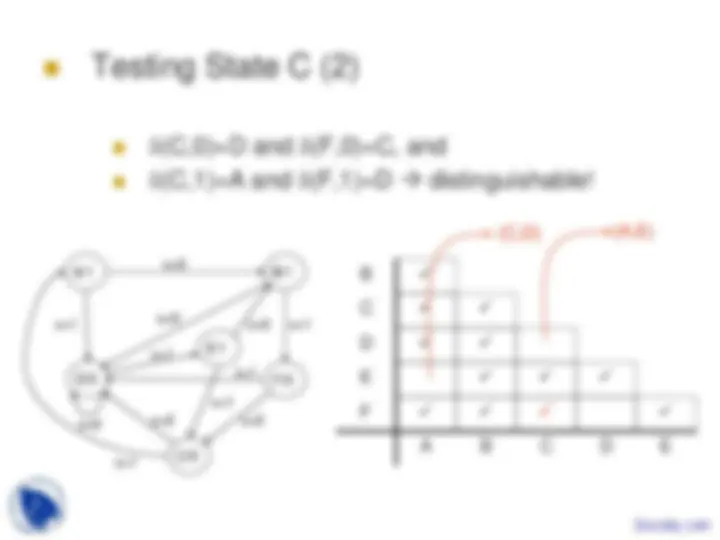
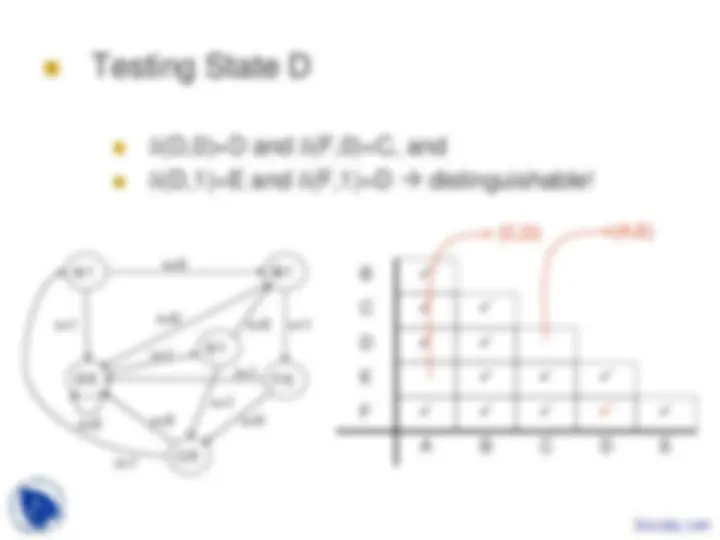
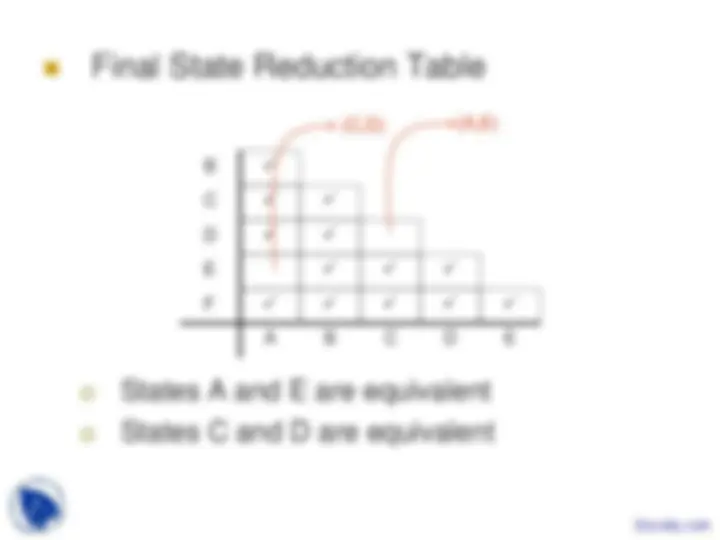
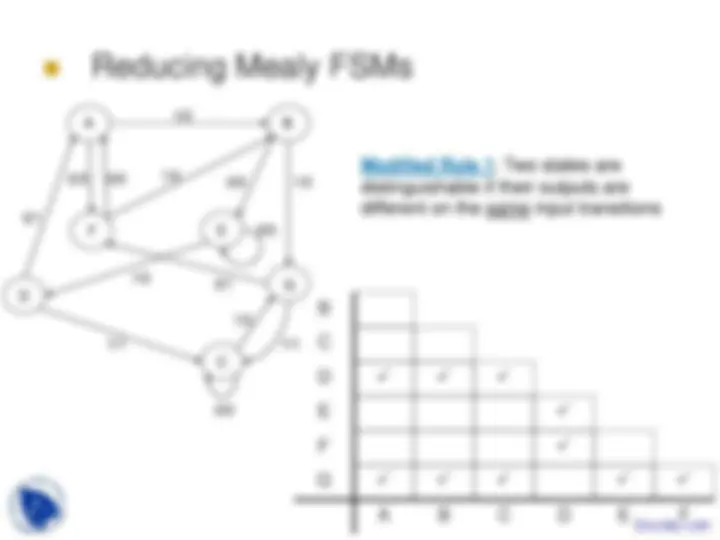
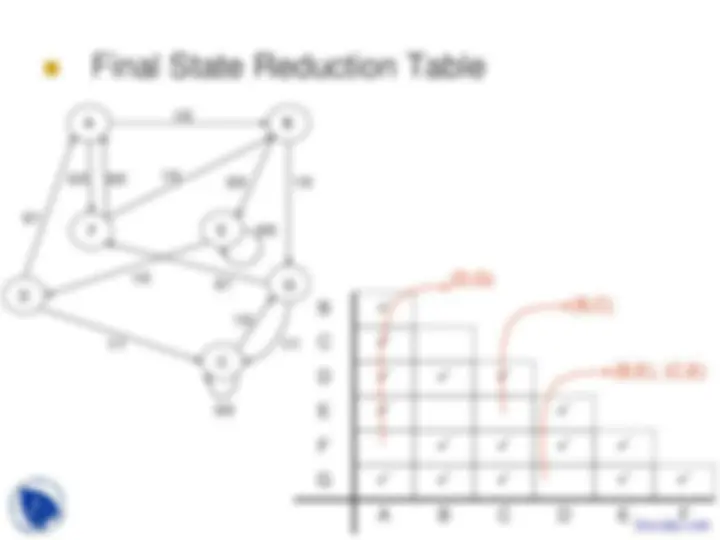
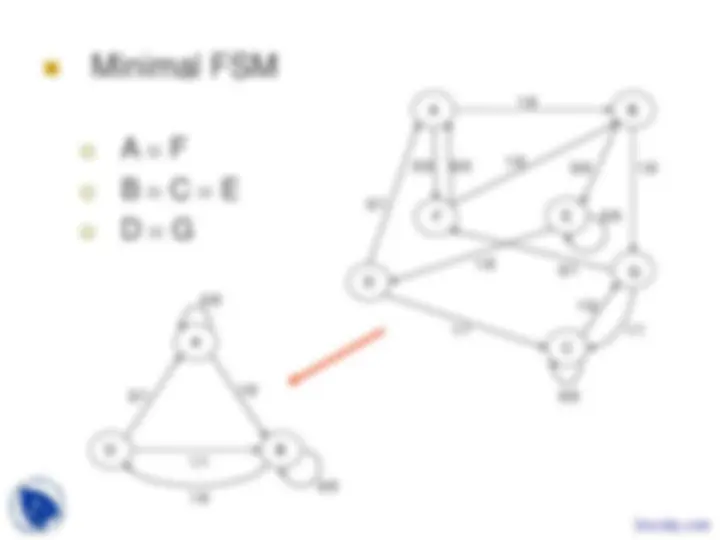


Study with the several resources on Docsity

Earn points by helping other students or get them with a premium plan


Prepare for your exams
Study with the several resources on Docsity

Earn points to download
Earn points by helping other students or get them with a premium plan
Community
Ask the community for help and clear up your study doubts
Discover the best universities in your country according to Docsity users
Free resources
Download our free guides on studying techniques, anxiety management strategies, and thesis advice from Docsity tutors
The digital system design, is very helpful series of lecture slides, which made programming an easy task. The major points in these laboratory assignment are:State Minimization, Reduction in States, Distinguishing States, Corresponding Table Cell, Distinguishable Outputs, Final State Reduction Table, Effect of Outputs, Modified Rule, Input Transitions, Moore Fsm Example
Typology: Slides
1 / 20

This page cannot be seen from the preview
Don't miss anything!













Distinguishing States (2)
1
2
1
2
Testing States A and C
Testing States C and D
Testing State A
x=
x=
x=
x=
x=
x=
x=0 x=
x=
x=
x=
x=
Testing State B
x=
x=
x=
x=
x=
x=
x=0 x=
x=
x=
x=
x=
Testing State C (2)
x=
x=
x=
x=
x=
x=
x=0 x=
x=
x=
x=
x=
Testing State D
x=
x=
x=
x=
x=
x=
x=0 x=
x=
x=
x=
x=
The Effect of the Outputs Consider the two FSMs:
- 00/ How can you automate the reduction in states? Final State Reduction Table
Minimal FSM
A F
B C E
D G